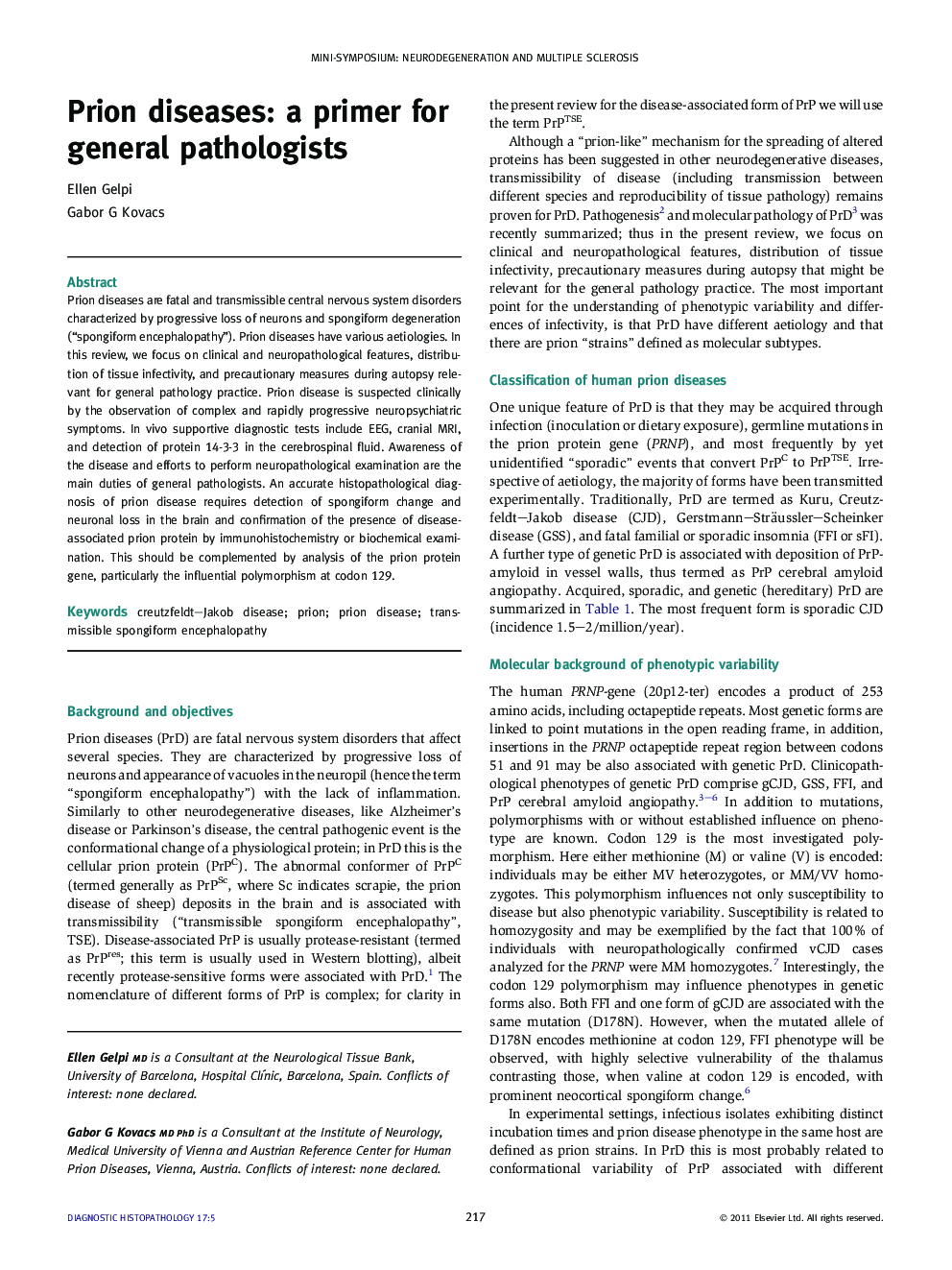| Article ID | Journal | Published Year | Pages | File Type |
|---|---|---|---|---|
| 4131529 | Diagnostic Histopathology | 2011 | 8 Pages |
Prion diseases are fatal and transmissible central nervous system disorders characterized by progressive loss of neurons and spongiform degeneration (“spongiform encephalopathy”). Prion diseases have various aetiologies. In this review, we focus on clinical and neuropathological features, distribution of tissue infectivity, and precautionary measures during autopsy relevant for general pathology practice. Prion disease is suspected clinically by the observation of complex and rapidly progressive neuropsychiatric symptoms. In vivo supportive diagnostic tests include EEG, cranial MRI, and detection of protein 14-3-3 in the cerebrospinal fluid. Awareness of the disease and efforts to perform neuropathological examination are the main duties of general pathologists. An accurate histopathological diagnosis of prion disease requires detection of spongiform change and neuronal loss in the brain and confirmation of the presence of disease-associated prion protein by immunohistochemistry or biochemical examination. This should be complemented by analysis of the prion protein gene, particularly the influential polymorphism at codon 129.
